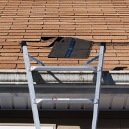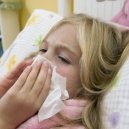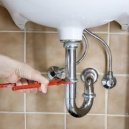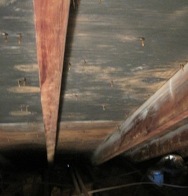Find a pre-screened local mold removal specialist Free Estimate
Find a Mold Specialist Now
Click or Call, Toll-Free 24/7
Green Mold In The Home
You’ve probably heard of mold sickness caused by black mold, but other types of mold can cause illness, too, including green mold.
There are more than one hundred types of mold commonly found in homes in the U.S, many of which can appear green in color. Some of the more common types of green colored mold include:
Aspergillus – this mold can appear green, yellow, brown, grey, or even white, and is often found growing on and inside walls.
Cladosporium – sometimes green, other times brown or gray, this mold can grow in cool climates as well as warm places and is often found growing on walls, cabinets, and carpets that have gotten wet.
Penicillium – often a bluish-green color, this mold is frequently found growing on wet carpets, in wet insulation, and on wet mattresses.
It can be difficult or impossible to identify mold just by its appearance, since the color of mold can vary depending on a number of factors, including the type of material on which it is growing.
Mold Sickness Caused by Green Mold
Mold can cause a variety of medical problems, primarily respiratory problems. For instance, aspergillus often causes respiratory infections like bronchitis and pneumonia, as well as inflammation of the lungs. Penicillium often causes sinus infections and inflammation of the lungs.
Some types of mold can cause other symptoms, as well. For instance, penicillium causes allergic reactions in some people that include symptoms like itchy skin rashes and hives. In really severe cases, allergic reactions even include swelling of the throat and difficulty breathing.
If you’re having symptoms you think might be caused by exposure to mold, see your doctor. Let him or her know you think mold might be causing your illness. Medications can help clear up respiratory infections and make breathing easier. However, you’ll also need to have the mold removed from your home in order to prevent symptoms from returning or worsening.
Removing Green Mold
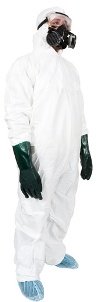
Removing mold, regardless of its color, is a difficult, complex, time-consuming process. Mold reproduces and spreads via microscopic spores, thousands of which can fit onto a surface the size of a postage stamp. When you begin cleaning up mold, these spores are dispersed into the air, causing mold to spread easily to other areas of the home. It also increases the likelihood of inhaling mold spores, causing mold sickness.
To protect yourself when removing mold, you need to block off your work area with large sheets of durable plastic. Many experts recommend setting up negative pressure in the work area to make sure mold spores don’t spread to other areas of the home. You also need to wear protective gear when cleaning up mold, including a face mask, disposable gloves, and disposable hair and shoe covers.
Detailed information on the mold remediation process.
For Help with Mold Removal
As you can see, mold removal can be a complicated task. In addition, the Environmental Protection Agency recommends having a professional handle your mold removal job if you have mold that covers an area greater than three feet by three feet, if you have mold growing in your heating and air conditioning ducts, if mold occurs after damage by water that might be contaminated with sewage, and if you have mold-related health problems or pre-existing health conditions like respiratory or immune system disorders that might be made worse by exposure to mold. If you need professional help, or if you want to do the work yourself but would like to get some free expert advice, you can schedule an appointment for a free consultation and home inspection with a qualified mold removal professional. Just click here to find experienced professionals offering free consultations in your area.
Free Home Inspection By A Mold Removal Specialist
Search This Website
Aspergillus mold on attic ceiling.
Recent Articles
-
See Our 5 Recommended Mold Removal Companies in Covington, KY
Apr 16, 25 12:59 PM
-
See Our 5 Recommended Mold Removal Companies in Wheaton, IL
Jun 20, 24 10:33 AM
-
See Our 5 Recommended Mold Removal Companies in Aberdeen, SD
Oct 08, 21 04:05 PM
